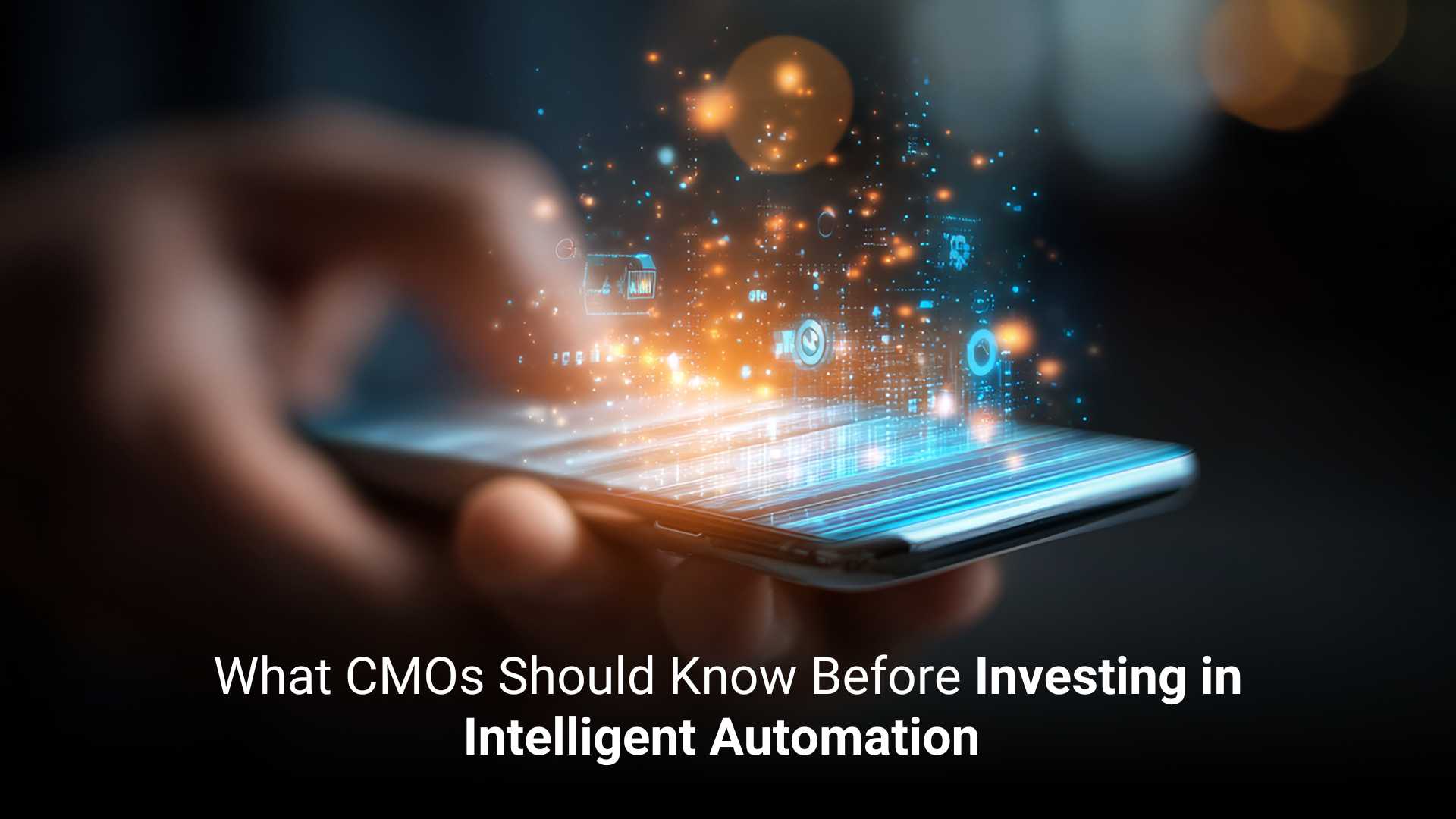
What CMOs Should Know Before Investing in Intelligent Automation
Your marketing team is juggling multiple campaigns across regions, audiences, and platforms. Emails are triggered, social media ads are optimized, and analytics dashboards are filled with data. Yet, your CMO instincts tell you something is missing. This is where intelligent automation steps in, promising efficiency.
CMOs are investing in intelligent automation to solve three challenges: scale, speed, and personalization. Intelligent automation does dynamic segmentation, personalized content, and predictive campaign management. For instance, AI automation tools can identify early when a buyer shows intent, triggers a tailored content journey, and routes qualified leads to sales.
This article explains why CMOs are keen to invest in intelligent automation.
Why CMOs Must Prioritize Intelligent Automation
Here’s why CMOs are putting intelligent automation at the core of their transformation.
1. Improving Lead Conversion
Marketing and sales alignment often breaks down at the handoff stage. Intelligent automation bridges this gap by scoring leads and routing them to the right team.
Example: A manufacturing company implemented automated lead scoring tied to CRM data. The system prioritized prospects based on purchase intent and engagement.
2. Decision-Making with Predictive Insights
Beyond execution, intelligent automation provides insights into campaign performance, ROI, and customer behavior. This empowers CMOs to shift from reporting to strategy.
Example: An IT services provider uses AI dashboards to forecast campaign outcomes and adjust ad spend.
3. Freeing Teams for Strategy
Repetitive tasks consume time that could be spent on innovation. Intelligent automation takes over, allowing teams to focus on strategy, storytelling, and relationship building.
Example: A fintech brand automated social listening and reporting, freeing marketers to design targeted campaigns.
4. Building an Agile Marketing Team
As marketing evolves into a technology-led discipline, CMOs must champion automation to stay competitive. Intelligent automation should create a process within the marketing team that learns, adapts, and scales with the business.
How to Evaluate Success Metrics Before Investing in Intelligent Automation
Here are key success metrics for CMOs to assess before leaping.
1. Campaign Efficiency and Time-to-Market
CMOs should measure campaign setup time, approval turnaround time, and the time from planning to launch.
Example: A SaaS company using marketing automation reduced campaign deployment time from 2 weeks to 3 days. Measuring time-to-market before and after implementation helps to understand.
2. Customer Engagement and Retention Metrics
CMOs can evaluate email open rates, click-through rates, and repeat interactions as early indicators of success.
Example: An e-learning company implemented automated content recommendations. Engagement rates grew, and retention among existing clients improved.
3. Marketing ROI and Cost
CMOs must measure not only the revenue generated but also operational cost reductions achieved through automation. This includes reduced campaign errors and improved allocation of marketing spend.
Example: A logistics firm used automation to optimize its ad spend across multiple platforms, cutting costs.
4. Data Accuracy and Decision-Making
Measuring improvements in data accuracy, reporting consistency, and decision-making speed provides a clear indicator of the value.
Example: A manufacturing company automated its analytics pipeline, reducing manual data entry errors and enabling faster, more informed marketing decisions.
5. Team Productivity
CMOs should assess how automation frees teams to focus on strategic and creative activities.
Example: After automating campaign reporting, a financial services firm redirected its team’s time to customer strategy and product innovation.
Challenges CMOs Face During Adoption and How to Mitigate Them
Here are key challenges CMOs face and how to overcome them.
1. Lack of Clear Strategy and Alignment
Challenge: Many organizations adopt marketing automation tools without a defined roadmap or alignment with business objectives.
Mitigation: Start with a vision tied to measurable outcomes. Involve cross-functional stakeholders around shared goals.
Example: A telecom firm developed a marketing automation blueprint that mapped every automation initiative to revenue KPIs.
2. Integration Complexity and Tool Overload
Challenge: The MarTech ecosystem is vast, and integrating multiple tools can create friction and cost inefficiency.
Mitigation: Choose automation platforms that integrate seamlessly with your existing tech stack.
Example: A financial services company replaced disconnected automation tools with a single platform, reducing integration costs.
3. Change Management and Team Readiness
Challenge: Teams often resist automation due to fear of job displacement or lack of technical expertise.
Mitigation: Build a culture of upskilling. Communicate the value of automation to the team.
Example: An IT services company launched an internal “Automation Champions” program to train marketers to leverage automation tools.
The Future of Intelligent Automation
Here’s what the future looks like in intelligent automation.
1. Integration of Generative AI
Automation platforms will generate personalized messages, visual assets, and reports.
Example: A manufacturing brand uses AI-driven copy generation for email campaigns, achieving faster content delivery.
Future Impact: Marketing teams will focus less on production and more on narrative and emotional connection.
2. Human-AI Collaboration Models
Intelligent automation will handle analytical tasks, while humans will lead creative decision-making.
Example: A fintech company uses automation for lead scoring while its marketing strategists focus on relationship-building.
Future Impact: CMOs will lead hybrid teams were technology augments human intelligence.
3. Ethical and Transparent Automation
CMOs will be responsible for ensuring data privacy, bias-free AI, and responsible automation practices.
Example: A tech provider embeds ethical AI guidelines into its marketing automation framework.
Conclusion
As you consider investing in intelligent automation, think of it as a strategy that unites your data, people, and purpose. The opportunity is immense, but so is the responsibility to implement it thoughtfully. Start by assessing your current marketing ecosystem, identifying where automation can add value, and building a roadmap that combines technology with human intelligence.

artificial intelligence marketing
Join our newsletter!
Enter your email to receive our newsletter.




